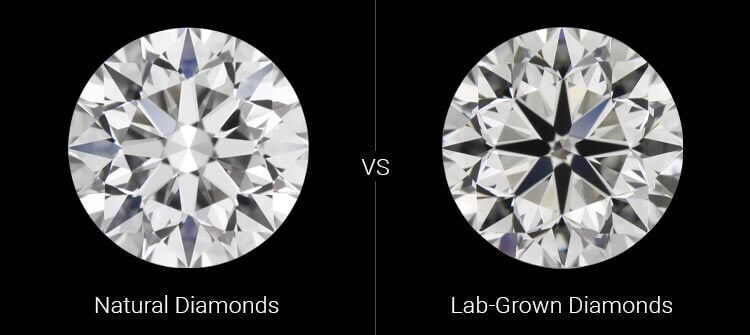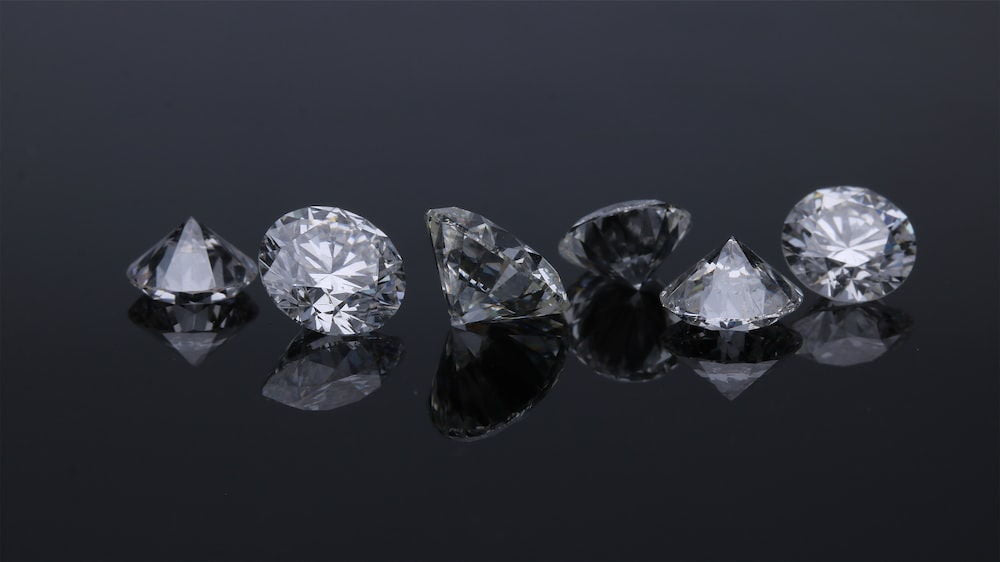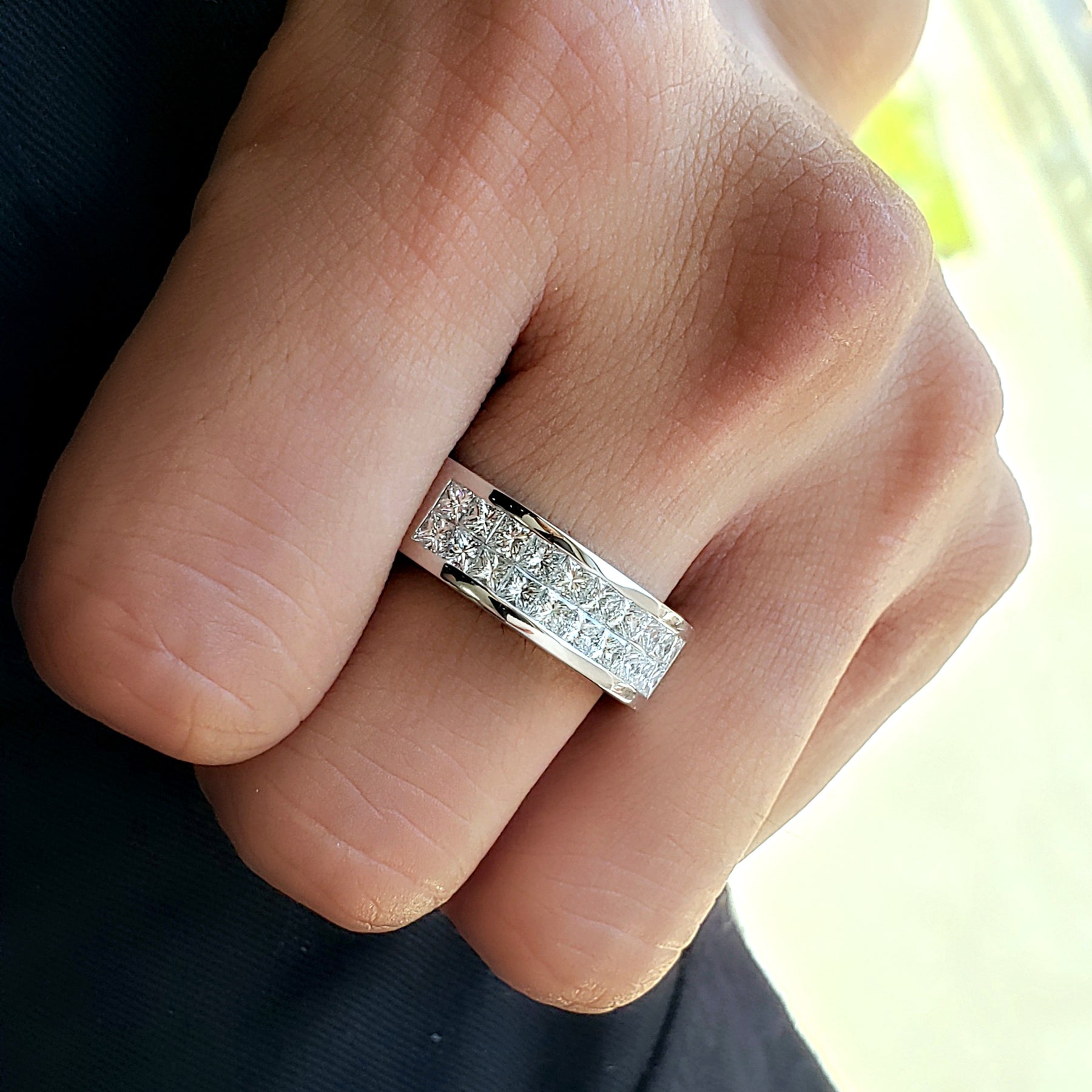Table of Contents
What Are Lab-Grown Diamonds?
Lab-grown diamonds are real diamonds that are created in a laboratory using advanced technology. These lab-grown diamonds vs real are produced using two primary methods: High Pressure High Temperature (HPHT) and Chemical Vapor Deposition (CVD). Both methods replicate the natural processes that occur deep within the Earth to form diamonds, making lab-grown diamonds virtually identical to mined diamonds in every way.
Despite being created in a controlled environment, lab-made diamonds have the same physical, chemical, and optical properties as natural diamonds. The carbon atoms in lab-grown diamonds are arranged in a crystal structure identical to those in real diamonds, which gives them the same brilliance, hardness, and durability.
What Are Real Diamonds?
Real diamonds, also known as natural diamonds, are formed under extreme pressure and heat deep within the Earth’s mantle over millions of years. Natural diamonds are mined from the Earth, and the mining process can be labor-intensive, environmentally disruptive, and costly. These diamonds are highly valued for their rarity, history, and their symbolism of timelessness and luxury.
Real diamonds are evaluated based on the “Four Cs”—cut, color, clarity, and carat weight. The quality of a diamond, along with its rarity, determines its price. While real diamonds are associated with luxury and heritage, there are increasing concerns about the environmental and ethical impact of diamond mining.
Key Differences Between Lab-Grown Diamonds and Real Diamonds
1. Chemical Composition and Physical Properties
Both lab-grown diamonds and real diamonds are made of carbon atoms arranged in a crystal lattice, making them chemically and physically identical. They both score a 10 on the Mohs scale of hardness, meaning they are extremely durable and resistant to scratches. Their brilliance, fire, and overall appearance are the same, making it impossible for the untrained eye to distinguish between a lab-grown diamond and a real diamond.
The difference lies in their origin. Real diamonds are formed naturally under the Earth’s crust over millions of years, whereas man-made diamonds are produced in a controlled lab environment in a matter of weeks or months.
2. Price
One of the most significant advantages of lab-grown diamonds is their price. Because man made diamonds are produced in labs, they are far more affordable than natural diamonds. The cost savings can be substantial, with lab-grown diamonds often being 20% to 40% less expensive than their mined counterparts for the same size and quality.
Real diamonds tend to be much more expensive due to the mining process, rarity, and high demand. The cost of a real diamond is also influenced by its size, cut, clarity, and color, making high-quality diamonds a significant investment.
3. Environmental and Ethical Impact
One of the key concerns surrounding real diamonds is the environmental damage and ethical issues associated with traditional diamond mining. Diamond mining can lead to deforestation, soil erosion, water pollution, and habitat destruction. Additionally, real diamonds have been linked to the funding of conflict and war, known as “blood diamonds,” especially in certain regions.
Lab-grown diamonds, by contrast, are considered a more ethical and sustainable choice. Since they are created in labs, there is no mining involved, which means man-made diamonds have a significantly lower environmental impact. The production of lab-grown diamonds also eliminates concerns about conflict diamonds, as these diamonds are sourced in a controlled, transparent manner.
4. Rarity and Value
Real diamonds are rare, and their scarcity contributes to their high value. Natural diamonds are formed over millions of years, making them a unique and precious commodity. The rarity of real diamonds has historically made them highly sought after and a symbol of luxury.
Lab-grown diamonds, on the other hand, are not rare. They can be produced on-demand in a lab, making them more readily available than natural diamonds. While lab-grown diamonds are still valuable, their lack of rarity means they do not hold the same long-term investment value that real diamonds do. However, this doesn’t detract from their beauty and durability, making them an excellent choice for consumers looking for an ethical, affordable alternative to mined diamonds.
5. Appearance
In terms of appearance, lab-grown diamonds and real diamonds are indistinguishable. Both types of diamonds exhibit the same brilliance, sparkle, and fire. They are cut in the same way and are evaluated using the same grading system. Unless an advanced scientific test is performed, it’s impossible to tell the difference between a man-made diamond and a real diamond with the naked eye.
One advantage of lab-grown diamonds is that they can be created to have near-perfect clarity and color, as the controlled environment in which they are made allows for fewer imperfections compared to some natural diamonds.
6. Resale Value
Historically, real diamonds have held better resale value than lab-grown diamonds. The rarity and long-established demand for real diamonds contribute to their ability to retain value in the resale market. Lab-grown diamonds, while beautiful and durable, are more likely to depreciate in value over time because they are produced in abundance and do not have the same rarity associated with real diamonds.
However, as the popularity of lab-grown diamonds continues to rise, their resale value may improve, especially as more consumers recognize their benefits, including their lower environmental impact and ethical sourcing.
Why Choose Lab-Grown Diamonds Over Real Diamonds?
There are several reasons why consumers may choose lab-grown diamonds over real diamonds:
-
Cost Savings: Man-made diamonds are typically much more affordable than mined diamonds of the same size and quality.
-
Ethical Sourcing: Lab-grown diamonds are free from the ethical concerns associated with traditional diamond mining, such as conflict diamonds and exploitative labor practices.
-
Environmental Impact: Lab-grown diamonds have a significantly lower environmental impact than mined diamonds, which often contribute to deforestation, habitat destruction, and pollution.
-
Identical Quality: Lab-grown diamonds offer the same brilliance, hardness, and overall appearance as natural diamonds, without compromising on quality.
-
Sustainability: Lab-grown diamonds offer a more sustainable and eco-friendly alternative to natural diamonds, appealing to consumers who are mindful of their environmental footprint.
Conclusion: Lab-Grown Diamonds vs Real Diamonds
The debate between lab-grown diamonds and real diamonds ultimately comes down to personal preferences, values, and budget. Lab-grown diamonds offer a more affordable, ethical, and environmentally friendly option without compromising on quality. They are chemically and physically identical to real diamonds, making them an excellent choice for those who want the beauty of a diamond but at a fraction of the price.
Real diamonds, on the other hand, are prized for their rarity, natural origin, and historical significance. They tend to hold more value in the long run, but they come with higher costs and potential ethical and environmental concerns.
Whether you choose a lab-grown diamond or a real diamond, both offer timeless beauty, durability, and sparkle, but with different benefits and considerations. For those who value sustainability, affordability, and ethical sourcing, lab-grown diamonds are an excellent choice. For those who prioritize the rarity and tradition of real diamonds, the decision may lean towards natural stones.




